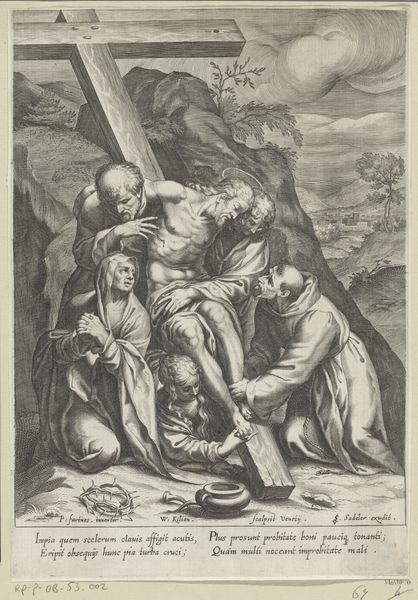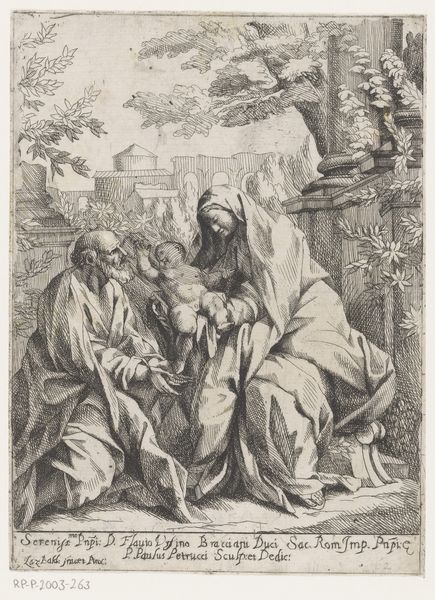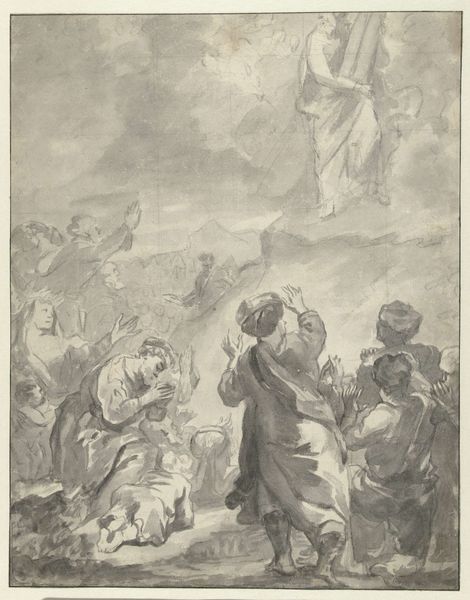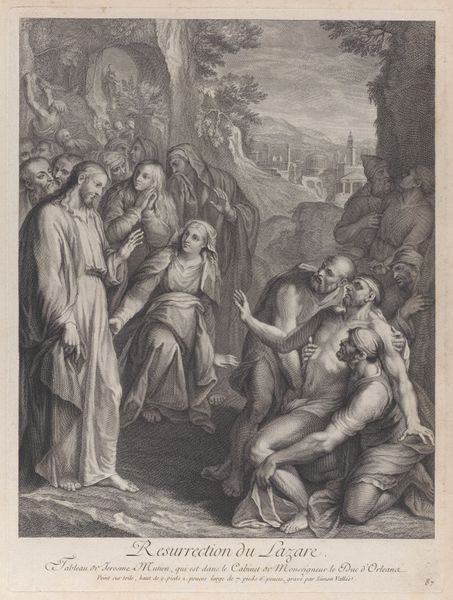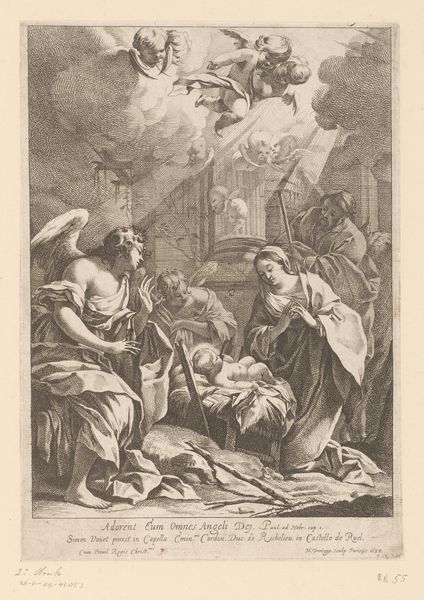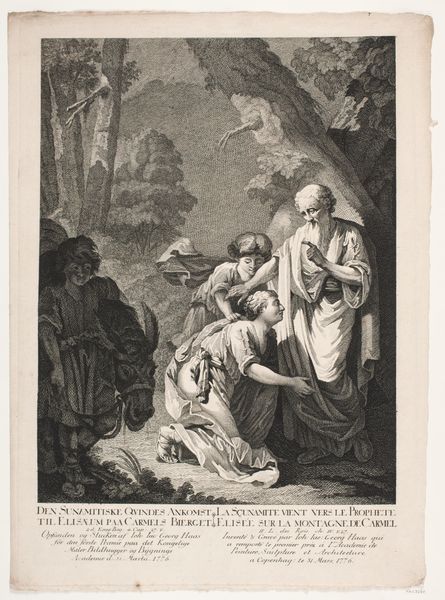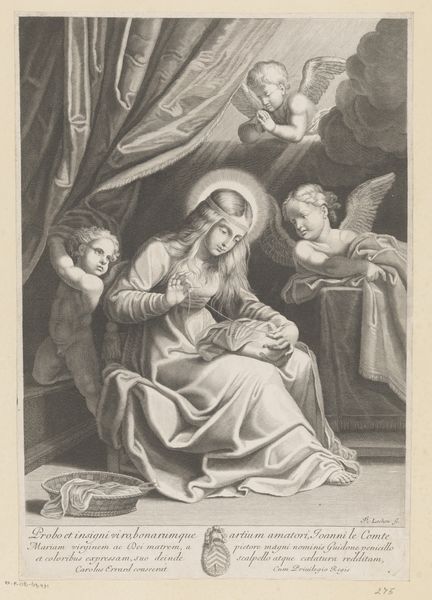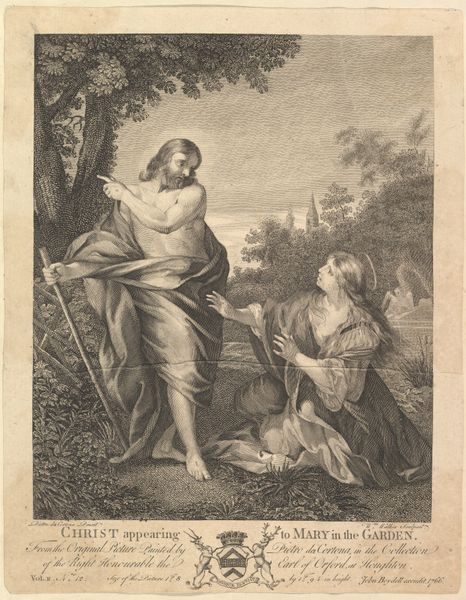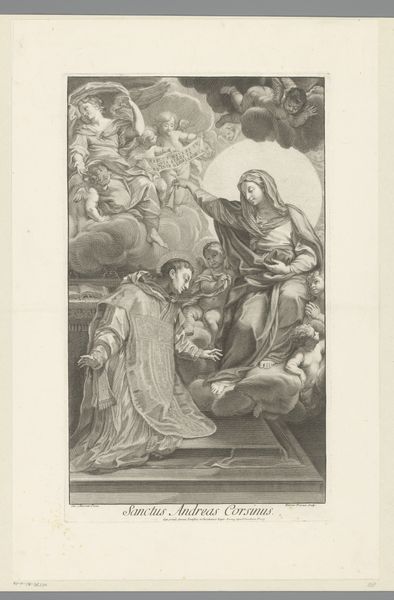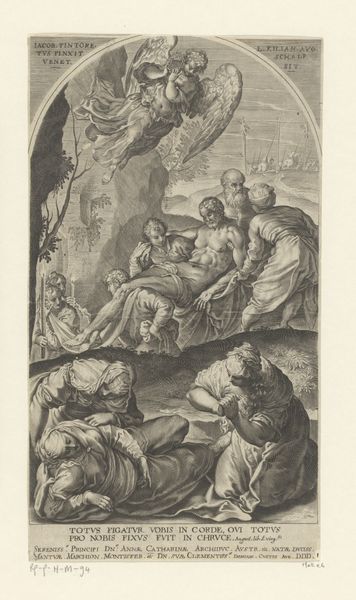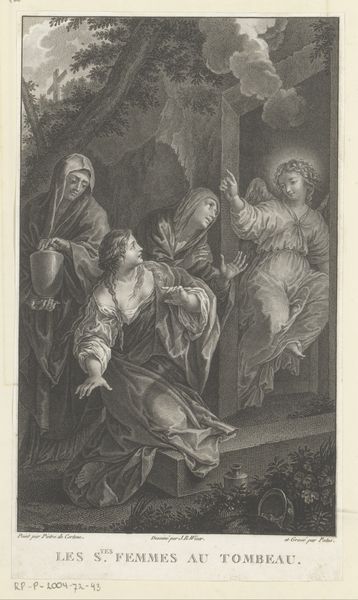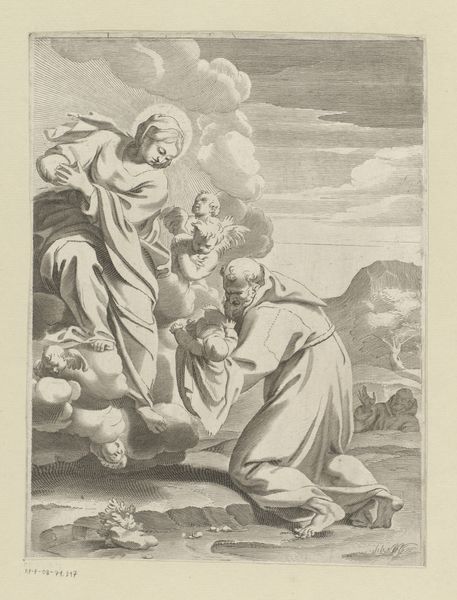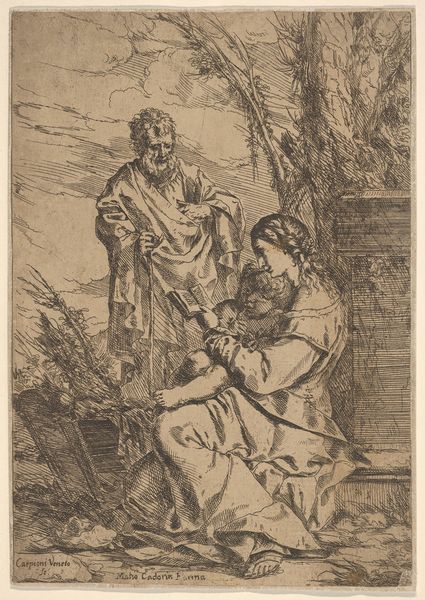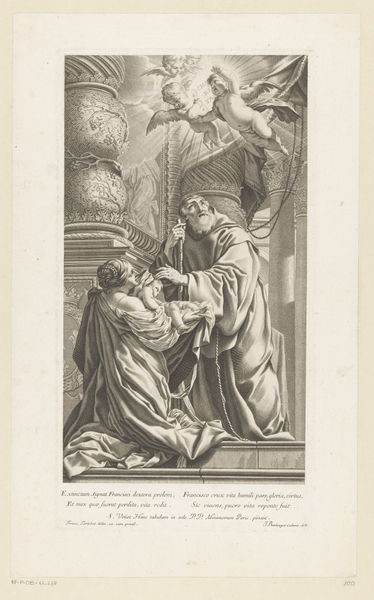
print, engraving
#
baroque
# print
#
old engraving style
#
landscape
#
caricature
#
figuration
#
line
#
history-painting
#
engraving
Dimensions: height 339 mm, width 256 mm
Copyright: Rijks Museum: Open Domain
Curator: Looking at this engraving, I’m immediately struck by the mood. It’s incredibly somber, a kind of quiet grief seems to permeate everything. Editor: Absolutely, it’s powerful stuff. What we're looking at is "Rest on the Flight into Egypt," dating from sometime between 1650 and 1693. The artist here is Elias Hainzelmann, and he created this piece as an engraving. You can find it at the Rijksmuseum. It presents a very particular version of the Holy Family's journey. Curator: You know, what fascinates me about this work is that supposed "rest." Look at Jesus; he’s kneeling under the weight of the cross! Is it a rest or just a pause before another unbearable step? The weariness in the posture and facial expressions – particularly in the mother's downcast gaze – tells a different story. A heavy and brutal one! Editor: It challenges the very notion of refuge and highlights the precarious position of displaced people then and now. Hainzelmann really wants us to think about who deserves the luxury of "rest". See, I also consider the broader themes of religious persecution and displacement inherent to the narrative of the Flight into Egypt itself. Remember this was the 17th century; religious and political upheavals were common. Curator: True. And while there’s an undeniable spiritual core here, there's also this beautiful, if stark, use of the landscape to convey feeling. Notice how barren and uninviting the landscape appears? That towering, ominous architecture looming in the distance is striking. Editor: And consider the weight of religious iconography present here; the halo isn’t merely decorative; it marks these figures as both sacred and deeply vulnerable. Hainzelmann creates a powerful statement about innocence confronted with institutional brutality. It encourages conversations around faith, oppression, and the pursuit of safe passage across cultures and eras. Curator: The piece is a moving image – not just then, but today too. Art like this does what it always has – cuts right through our usual filters to show us uncomfortable truths about the world, about ourselves. Editor: Precisely, this image urges us to reckon with the costs exacted on those seeking safety and compels us to ask, who bears the cross and who provides solace along the way?
Comments
No comments
Be the first to comment and join the conversation on the ultimate creative platform.
